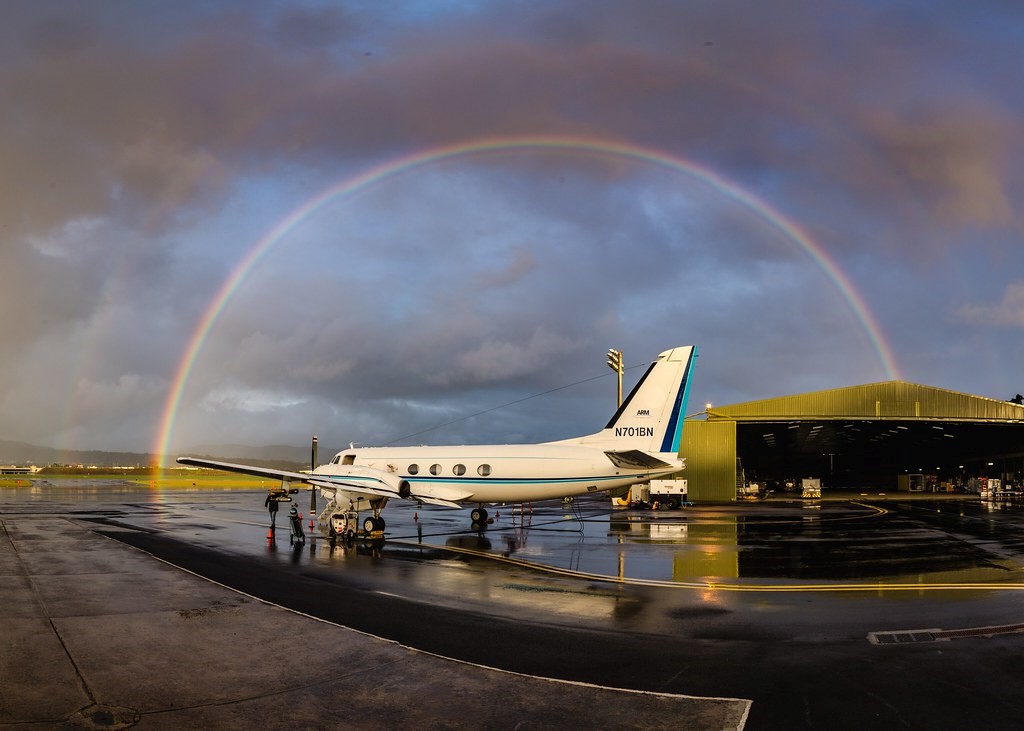Tiny Particles That Seed Clouds Can Form From Trace Gases Over Open Sea
Published: 26 January 2021
Understanding previously undocumented source of new particle formation will improve models of aerosols, clouds, and their impact on Earth’s climate

New results from an atmospheric study over the Eastern North Atlantic reveal that tiny aerosol particles that seed the formation of clouds can form out of next to nothingness over the open ocean. This “new particle formation” occurs when sunlight reacts with molecules of trace gases in the marine boundary layer, the atmosphere within about the first kilometer above Earth’s surface.
This research used data from the Aerosol and Cloud Experiments in the Eastern North Atlantic (ACE-ENA) field campaign, which the Atmospheric Radiation Measurement (ARM) user facility conducted in summer 2017 and winter 2018. The U.S. Department of Energy’s Atmospheric System Research (ASR) and NASA funded the analysis of the measurements.
The findings, published January 22, 2021, by the journal Nature Communications, will improve how aerosols and clouds are represented in models that describe Earth’s climate so scientists can understand how the particles—and the processes that control them—might have affected the planet’s past and present, and make better predictions about the future.
ACE-ENA Principal Investigator Jian Wang, along with lead authors Guangjie Zheng and Yang Wang, initiated the study while working at Brookhaven National Laboratory (BNL) in New York.
“For a long time, people thought this process was very rare,” said Jian Wang, now at Washington University in St. Louis. “We found from our study, however, that it happens quite frequently.”
“When we say ‘new particle formation,’ we’re talking about individual gas molecules, sometimes just a few atoms in size, reacting with sunlight,” said study co-author Chongai Kuang from BNL. “It’s interesting to think about how something of that scale can have such an impact on our climate—on how much energy gets reflected or trapped in our atmosphere.”
But modeling the details of how aerosol particles form and grow, and how water molecules condense on them to become cloud droplets and clouds, while taking into consideration how different aerosol properties (e.g., their size, number, and spatial distribution) affect those processes is extremely complex—especially if you don’t know where all the aerosols are coming from. So Wang led a team of scientists from BNL and collaborators in atmospheric research around the world to collect data in a relatively pristine ocean environment. In that setting, they expected the concentration of trace gases to be low and the formation of clouds to be particularly sensitive to aerosol properties—an ideal “laboratory” for disentangling the complex interactions.
Land and Sea

During the ACE-ENA campaign, researchers used ARM’s long-term ground-based observatory on Graciosa Island in the Azores (an archipelago 850 miles west of continental Portugal) and the facility’s now-retired Gulfstream-159 research aircraft outfitted with 55 atmospheric instrument systems to take measurements at different altitudes over the island and out at sea.
The team flew the aircraft on “porpoise flights,” ascending and descending through the boundary layer to get vertical profiles of the particles and precursor gas molecules present at different altitudes. And they coordinated these flights with measurements taken from the ground station.
The scientists hadn’t expected new particle formation to be happening in the boundary layer in this environment because they expected the concentration of the critical precursor trace gases would be too low.
“But there were particles that we measured at the surface that were larger than newly formed particles, and we just didn’t know where they came from,” said Kuang.
The aircraft measurements gave them their answer.
Read the full BNL news release.
More information on the study is also available in this ARM/ASR research highlight.
Keep up with the Atmospheric Observer
Updates on ARM news, events, and opportunities delivered to your inbox
ARM User Profile
ARM welcomes users from all institutions and nations. A free ARM user account is needed to access ARM data.


















